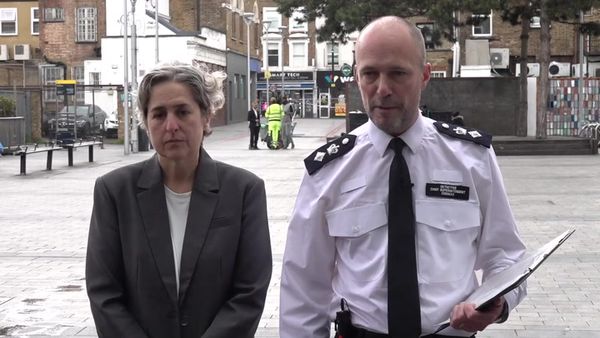
On a rainy night in London, a young woman walks towards the entrance of a sidestreet, smiling to herself as she recalls the evening spent with the friend she just farewelled at the train station. She’s about to walk down the poorly-lit shortcut that will take her back to her accommodation, when she stops.
Something in her body tells her not to go down that street. She pauses, then turns back towards the busy, well lit but longer route home.
“Where are you going?” She hadn’t heard the footsteps of the man who had been walking behind her. He seems thrown by her change of direction. Instincts screaming, she doesn’t answer and hurries away along the main road.
Everyone has a story like this – the road they didn’t walk down, the cafe they didn’t go into, the time their body reacted to save them a split second before something bad happened. There are many terms for it; a sixth sense, a gut feeling, something in the air.
According to University of New South Wales neuroscientist and psychologist Joel Pearson, this is what’s happening in the brain in that moment: “[It’s] processing all the things in the environment; the time of day, how well it’s lit, how well it’s not lit, the pace the person’s walking, for example, the shadows, the tone and a hundred other things.
“It’s going to be making a prediction based on prior learning, situations you’ve been in, also movies you’ve watched and all the things that you’ve been through in your life.”
Call it intuition – a nebulous concept that Pearson has been studying for 25 years. As the author of a new book called The Intuition Toolkit, he’s settled on a solid definition for that thing a lot of people can’t quite put their finger on: “It’s the learned, positive use of unconscious information for better decisions or actions.”
In his Future Minds Lab at UNSW, Pearson is engaged in the science of consciousness; in particular how information from our unconscious affects our decision-making, behaviour and feelings, and what effect emotion has on that process. “It’s this fascinating topic,” he says, “but the science was just really bad at it.”

It’s the science of “psychophysics”; a subfield of psychology that Pearson describes as developing blood tests or microscopes for the mind. “But it’s not cells or neurons or chemicals when looking under the microscope, it’s behaviour and experiences and representations, whether it be depression or anxiety or mental imagery or intuition.”
The goal of Pearson’s work is to understand not only what intuition is, but how it happens, how we use it, and how we can use it better.
The first challenge was to come up with an accurate and useful definition for intuition. That’s important because a lot of things get lumped under intuition – paranoia, emotional thinking, cognitive bias, the human tendency to see patterns or associations where none exist and human fallibility when it comes to judging probability. Pearson calls this “misintuition'”, and says if we place too much trust in it, we could be putting ourselves at greater risk.
Intuition, he says, includes three key components: it’s learned, it’s productive, and it’s based on unconscious information.
The learning is what informs what we do with the unconscious information that our brain is receiving. For example, consider the scenario of trying to choose a new cafe to get a coffee or lunch.
“You’ve been to hundreds of cafes before and your brain’s processed all those things – the temperature, the music, the hairstyles, the coffee machine, the this, the that, how clean the floor is, how clean the windows are – and you just learned that some of those things predict better food and better coffee,” Pearson says.
So when you’re standing at the entrance of a cafe, your intuition is applying those learnings to the wealth of unconscious information you’re processing, and giving you a gut feeling about whether you do or don’t want to eat there.
Intuition also has to be productive, according to Pearson’s definition. It’s his way of clarifying the ongoing debate about whether intuition is good or bad, whether the term can cover any kind of automatic or emotion-driven decision-making. He wants to focus on the situation in which intuition works for the better.
And finally, the unconscious information is where things get really interesting in Pearson’s lab. The information that we are conscious of receiving at any given moment – the sound of a colleague on the telephone, the smell of coffee when we walk past a cafe, the feeling of hot sun on our skin – is but the tip of an iceberg.
“The brain is really good at restricting the spotlight, so it can make all the resources focused on one narrow thing, like a spotlight on the stage,” Pearson says. But all of that sensory information in the rest of the iceberg is still being processed.
This is illustrated by what Pearson calls “blindaction”, and it’s an example of how we can incorporate information that we’re not even conscious of into our actions, whether that’s flinging out a foot to deflect a soccer ball, snatching a falling object tipped off a kitchen counter, or pulling a child back from the road moments before an unseen car speeds past.
Defining intuition is one thing. The next question Pearson is working to answer is: how can we use this information to explore and exploit our own intuition? To that end, he’s come up with a handy acronym for the five rules for understanding and safely using your intuition: Smile.
The S stands for self-awareness, particularly of your emotional state. When we’re stressed or emotional, our intuition is compromised by those emotions. In that state, we shouldn’t trust what feels like intuition because what we’re really doing is relying on emotional thinking, fear or paranoia.
The M represents mastery, because learning to use your intuition takes practice and learning. Those intuitive clues you rely on to choose a cafe in Melbourne aren’t going to be of much use choosing a cafe in Tokyo, because you don’t have the learning to support your intuition. As Pearson writes , “You cannot rely on intuition if it’s the first time you’re doing something.”
The I stands for impulses and addiction, which can be also mistaken for intuition. Impulses are “innate reflexes”, like what drives the salmon upstream to spawn or birds to migrate north in winter. And anyone who’s ever succumbed to an irresistible craving will know how convincing that addictive siren call of the forbidden call can be. But it’s also not intuition.
The L is for low probability. “Our brains are really bad at understanding probability,” Pearson says, as the $7bn spent by Australians on lottery tickets in 2023 can attest to. A fear of sharks or being struck by lightning is not intuition (unless you happen to be in a shark cage or standing on top of a barren hill during a storm). We also attribute random events to intuition, like dreaming of a plane crash the night before a plane actually crashes somewhere in the world.
And finally, the E is for environment, which ties into the learning aspect: intuition should only be trusted in familiar and predictable contexts, whether that be trusting our intuition about a prospective business partner in a completely different cultural context, or our intuition about the safety of a street in a different city.
As that young woman who, decades ago, made a different choice about which street to walk on that wet London night, I can’t help but feel that in that moment, my intuition saved me from danger. And for that I’m very grateful.







